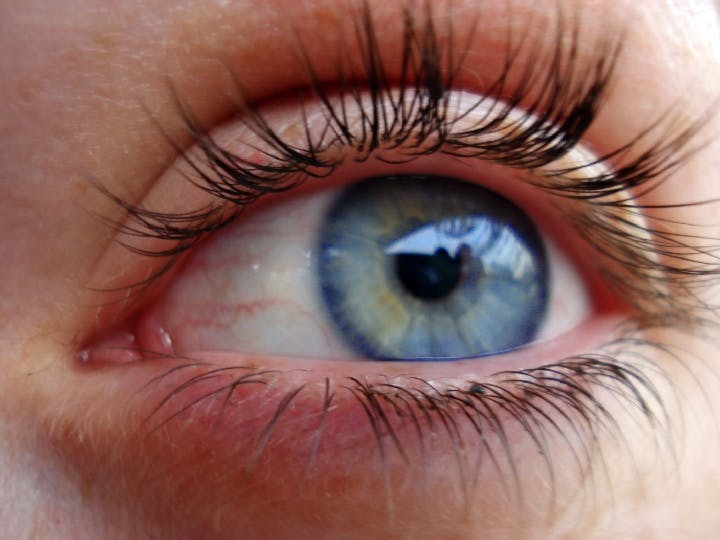Everyone has blue eyes. They just don't know it yet.
– Julia Higgins
The boom in eye accessories has led to a new procedure that can permanently change the color of your irises. But is vanity really worth it?
In studies on eye color conducted around the world, researchers have found that blue eyes are considered the most conventionally attractive. There are a number of reasons explaining these results. Blue eyes are commonly associated with idealized beauty standards. They can demonstrate sexual attraction more obviously, making them more appealing to potential mates. And, notably, only 17 percent of the world’s population has blue eyes, making them the rarest in the world.
With that rarity comes value. But are baby blues worth $5,000?
Stroma Medical Corporation says yes. In 2009, Dr. Gregg Homer founded the medical company, which bills itself as a “leader in aesthetic ophthalmic innovation.” The establishment of Stroma coincided with Homer’s development of a laser technology that enables clients to permanently change their eye color from brown to blue.
Homer’s treatment works because of a little-known quirk: all humans have blue eyes. Eye colors differ depending on the amount of pigment in the iris — blue eyes lack pigment, green eyes have some pigment, and brown eyes have a lot of pigment. With his laser technology, Dr. Homer discovered he could disrupt the layer of melanin pigment in brown eyes, resulting in a gradual dissolution of the dark color. Eventually, during a two-to-four week window after the initial 30-second procedure, brown eyes become blue.
The company is still in its clinical trial phase, with commercial release dates unknown. The permanency of the procedure has prevented a swift clearance from health regulators in the United States, but after a series of clinical trials and successful results, Stroma board members are confident the procedure is ready for debut on the public market.
The operation is without danger. Unlike Lasik eye surgery, which uses a high-power laser, the Stroma procedure utilizes a low-energy laser. Lasik procedures — which are fraught with potential risks to sight — focus intense laser energy on the surface of the eye. Stroma procedures, in contrast, direct lasers inside the eye, which has been unheard of in the world of optometry, and can result in greater damage to vision and eye health. These risks aside, Dr. Homer asserts that Stroma receives around 300 messages of interest per day from would-be clients around the world.
Though Stroma’s technology is the first of its kind, methods to modify eye color have been around for decades. Eye color implants, less common than colored contacts but more popular than color-corrective laser surgery, have recently increased in popularity, due in part to R&B singer-songwriter Tameka Harris’s endorsement of the product. The procedure (which can only be completed once would-be clients pass required eye exams) involves cutting into the cornea and inserting an artificial iris in the color of the client’s choosing.
The iris implant procedures are not yet performed in the United States — the FDA has banned the practice, due to the many long-term dangers it poses. BrightOcular, however, has made a name for itself in the U.S. as the premiere American artificial iris manufacturer.
Unlike Stroma, which promotes a vanity-induced, brown-to-blue color transition, BrightOcular provides a wide variety of eye colors, under the guise of purely medical purposes. Their iris implant, patented in 1996, is billed as a way to “treat or alleviate cases of heterochromia, ocular albinism, and other iris-related abnormalities by protecting the eyes from the harmful effects of sunlight in patients who suffer from high levels of photosensitivity.” The potential negative side effects that result from the procedure, however, are numerous. Patients with these iris implants have reported loss of sight, increased risk of glaucoma, cataracts, and continuous inflammation of the iris, in a study released by the American Academy of Ophthalmology.
Though these permanent color corrections are receiving heightened media attention, colored contacts have been in the public eye for decades. Colored lenses account for 20 percent of the $7.8 billion contact industry, and their popularity continues to rise. Alternatively referred to as “decorative” or “fashion” lenses, colored contacts have been used extensively in the high fashion industry, as both eye enhancers and outfit-makers. With promotion in popular culture, these lenses eventually trickled into the mainstream market.
The popularity of colored contacts, especially in recent years, has led to the creation of niche lens markets. Circle lenses, popularized by Japanese anime characters and Lady Gaga, are a recent cosmetic fad sweeping the United States and beyond. These lenses cover both the iris and a portion of the whites surrounding the iris, creating a big-eyed, doll-like appearance — a look that is prized in Asian countries, and which is slowly starting to find a place in the American aesthetic.
As these varied methods of eye color modification become more popular, questions have arisen about the idealized beauty standards perpetuated by the media. By developing technology that permanently changes an iris from brown to blue, do researchers (like Stroma’s Dr. Homer) reinforce the belief that blue eyes — or any light-colored eyes, for that matter — are fundamentally better and more beautiful than others? The answer is in the eye of the beholder.
* * *
Further Reading:
Peter Shadbolt, “Laser procedure can turn brown eyes blue,” CNN, March 6, 2015.
Abbey Ellin, “Looking for a Match,” New York Times, January 2, 2013.
Cover photo courtesy of Dakotilla
